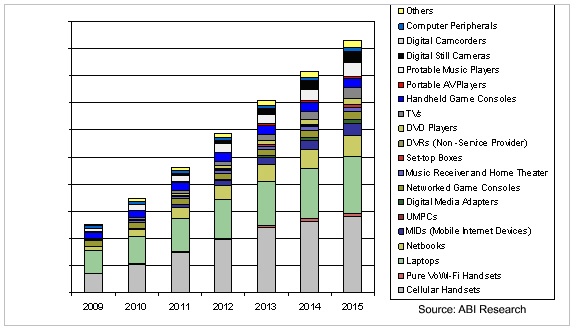Prismata Chart That Shows Level When Reach Card

To see how much Experience you need to go up levels and when you get Training Points, see the Experience Chart. To see how to get Experience and how it is calculated, see the Experience page. What do these values mean? This chart shows the BASE VALUES of the characters for each level. That means these values are without any equipment on.
A blood sugar, or blood glucose, chart identifies a person’s ideal blood sugar levels throughout the day, including before and after meals. It can help a person with glucose management if they need to keep levels within a normal range, such as those with diabetes.Doctors use blood sugar charts to set target goals and monitor treatment plans.
Blood sugar charts also help those with diabetes assess and self-monitor their blood sugar test results.The ideal blood sugar level for an individual depends on when in the day they carry out blood glucose monitoring, as well as when they last ate.In this article, we provide some charts that demonstrate the ideal blood sugar levels throughout the day. We also explain the importance of staying within the recommended ranges. A doctor will explain the ideal blood sugar levels for a person with diabetes.Blood sugar charts act as a reference guide for blood sugar test results. As such, blood sugar charts are important tools for diabetes management.Most diabetes treatment plans involve keeping blood sugar levels as close to normal or target goals as possible. This requires frequent at-home and doctor-ordered testing, along with an understanding of how results compare with target levels.Doctors often provide A1C blood sugar recommendations in blood sugar charts. They tend to give A1C results as both a percentage and an average blood sugar level in milligrams per deciliter (mg/dl).To help interpret and assess blood sugar results, the outline and abnormal blood sugar levels for those with and without diabetes.
Stress levels can affect blood sugar targets.Appropriate blood sugar levels vary throughout the day and from person to person.Blood sugars are often lowest before breakfast and in the lead up to meals. Interpreting blood sugar meter readings depends mostly on individual patterns and targets. A medical professional will set these at the beginning of diabetes treatment.Certain forms of temporary diabetes, such as gestational diabetes, also have. Self-monitoring blood sugar is essential for managing diabetes.Monitoring blood sugar levels is an important part of diabetes management.
The best monitoring plans often rely on both self-monitoring at home and doctor-ordered tests, such as A1C tests.Many types of blood sugar monitor are available for self-monitoring. Most blood sugar monitors in the United States involve using blood obtained from a finger prick and testing strips. These give blood sugar readings in mg/dl.Modern home blood sugar meters produce instead of whole blood glucose counts.This allows for more accurate readings of daily blood glucose levels. It is also easier to directly compare the results of self-monitoring and doctor-ordered tests, as doctors also use plasma glucose counts.Tracking daily blood sugar level changes can help doctors understand how well treatment plans are working.
This can help them determine when to adjust medications or targets. It can also help reflect the impact of diet and exercise.The frequency of blood sugar tests varies among individual treatment plans, as well as the type and stage of diabetes.Recommendations for testing are as follows:Type 1, adult: Check at least twice daily, up to 10 times. People should perform their tests before breakfast, at fasting, before meals, sometimes 2 hours after meals, before and after physical activity, and at bedtime.Type 1, child: Check at least four times daily. People should perform their tests before meals and at bedtime.
Tests may also be required 1–2 hours after meals, before and after exercise, and overnight.Type 2, people taking insulin or other management medications: The recommended frequency of testing varies depending on dosage and the use of any additional medications.Those taking intensive insulin should test when fasting, before meals and bedtime, and sometimes overnight. Those taking insulin and additional medications should at least perform tests at fasting and bedtime. People taking background insulin and one daily premixed insulin injection should perform tests when fasting, before premixed dosages and meals, and sometimes overnight.Those not taking noninsulin oral medications or managing blood sugar levels through dietary adjustments require much less frequent blood sugar testing at home.Type 2, when there is a low risk of low blood sugar: Often, daily tests are not necessary. Performing tests at meal times and bedtime should reflect the real-time impact of lifestyle changes.If a person is not meeting blood sugar goals or A1C targets, the frequency of testing should increase until levels return to within the normal ranges.Gestational: Those following a course of insulin should perform tests at fasting, before meals, and 1 hour after meals. Those not taking insulin should perform tests at fasting and 1 hour after meals.People with gestational diabetes should test more regularly during periods of physical and emotional stress, such as acute illness or.Continuous glucose monitors (CMGs) are devices that are particularly helpful for people who have difficulty using blood sugar meters.
CMGs have a sensor that the individual inserts into their skin to measure the amount of sugar in tissue.If blood sugar levels become much higher than or too far below the established targets, an alarm will sound. Some CMGs also track the changes in blood sugar level over the course of hours and display to the user whether levels are rising or falling.A person should verify CMGs regularly by taking blood sugar levels with a finger-prick meter.

It is best to perform tests at times when blood sugar levels are steady, so avoid testing straight after meals and bouts of physical activity. Managing blood sugar levels is an important step in preventing the complications of diabetes.Making sure that blood sugar levels stay within normal ranges can also be a strong sign that treatment is working.Although many people will have individual requirements and characteristics that shape their target blood sugar range, a doctor will set these goals using a blood sugar chart at the start of treatment. They may adjust these targets as treatment progresses.If a person notices any symptoms of either extremely low or extremely high blood sugar, they should seek medical attention. Low blood sugar in a person with diabetes is most likely due to the medication they are taking.Anyone experiencing periods of low blood sugar should discuss this with their doctor, as they may need to change the dosage or type of medication. Different types of insulin, for instance, have different peak times; some work right away, while others may take effect more slowly but last longer.Diet and exercise also affect blood sugar levels, so coordinating the best times in relation to meals and medication may help. Keeping a journal that includes the food a person eats and when, the amount of medication they take and when, and any exercise they engage in will help them and their doctor devise a good plan.Deborah Weatherspoon, PhD, RN, CRNA Answers represent the opinions of our medical experts. All content is strictly informational and should not be considered medical advice.
Originally posted by:The Trading Card FAQ refers to Level 50 in the Booster Pack drop rate section, anything after Level 50 I doubt there is any real benefit.Level 10: +20% increase in your drop rateLevel 20: +40% increase in your drop rateLevel 30: +60% increase in your drop rateLevel 40: +80% increase in your drop rateLevel 50: +100% increase in your drop rate (i.e. The rate has doubled)Etc.Well, at the end of the section you are referring to, they do put 'Etc.' , leading one to belive it would be something like:Level 60: +120% increase in your drop rateLevel 70: +140% increase in your drop rateLevel 80: +160% increase in your drop rate.and so on and so fourth.At least, that's how I'd think it would be, otherwise there'd have been no reason for them to put 'Etc.' After the level scaling list.
Originally posted by:The Trading Card FAQ refers to Level 50 in the Booster Pack drop rate section, anything after Level 50 I doubt there is any real benefit.Level 10: +20% increase in your drop rateLevel 20: +40% increase in your drop rateLevel 30: +60% increase in your drop rateLevel 40: +80% increase in your drop rateLevel 50: +100% increase in your drop rate (i.e. The rate has doubled)Etc.Well, at the end of the section you are referring to, they do put 'Etc.' , leading one to belive it would be something like:Level 60: +120% increase in your drop rateLevel 70: +140% increase in your drop rateLevel 80: +160% increase in your drop rate.and so on and so fourth.At least, that's how I'd think it would be, otherwise there'd have been no reason for them to put 'Etc.' After the level scaling list.That is true, there may be no limit as to how far you can level up. I aiming for Level 50, no particular reason.
Need for speed rivals review. Keep raising the stakes race after race to become an ever-more valuable target to the cops - but risk losing it all if busted. As a cop, players work together as part of a team in pursuit of racers, earning prominence and rising in the ranks of the Police Force with every bust. Achieving higher ranks unlocks new police-only cars and more powerful pursuit tech.At the heart of Need for Speed Rivals is AllDrive, an innovative new online feature that allows gamers to seamlessly transition from playing alone to playing with friends, eliminating the line between single player and multiplayer.